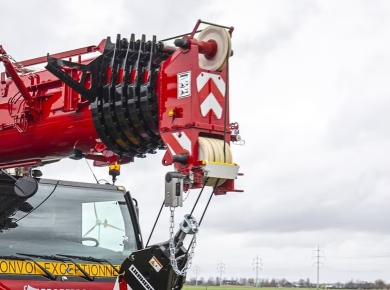A fire can erupt in an instant, transforming a bustling construction site or a busy office into a scene of chaos. The aftermath can be devastating—not just in terms of property loss but also the potential for injuries or even fatalities. Implementing effective fire safety protocols is not merely a regulatory requirement; it’s a moral imperative. One of the most valuable tools at our disposal is the RACE acronym, a simple yet powerful framework that can guide our response to fire emergencies. Having spent years in health and safety management, I’ve seen firsthand how understanding and utilizing RACE can make a significant difference in workplace safety.
Recognizing the Importance of Fire Safety
Fire safety isn’t just a box to tick during compliance training; it’s a fundamental aspect of workplace management. Each year, countless incidents occur due to inadequate fire safety measures. These incidents can lead to severe injuries, loss of life, and crippling financial repercussions for businesses. Understanding the RACE acronym—Rescue, Alarm, Contain, Extinguish—enables us to create a culture of safety that prioritizes preparedness and swift action.
Rescue: Prioritize Lives
The first step in any fire emergency is to focus on human safety. If a fire breaks out, your instinct should be to rescue anyone in immediate danger. This means knowing your workplace inside and out, including who might need assistance or who may be unaware of the situation. During my time managing a construction site, we conducted regular fire drills that emphasized quick evacuations, allowing team members to practice identifying those who may require help, such as individuals with mobility challenges. The key is to foster a culture where every employee feels empowered to act without hesitation.
Alarm: Raising the Alert
Once you’ve ensured everyone is as safe as possible, the next critical step is to raise the alarm. This involves activating fire alarms and notifying emergency services. It’s crucial that every staff member knows how to operate fire alarms and understands the protocols for reporting a fire. In a recent safety training session, we highlighted the importance of clear communication. Employees should be trained to use specific phrases when reporting a fire to avoid any confusion. Clarity can save precious seconds in an emergency.
Contain: Limit the Spread
After ensuring that people are safe and the alarm has been raised, the next step is to contain the fire, if it’s safe to do so. This involves closing doors and windows to prevent oxygen from feeding the flames. When I was overseeing a renovation project, we had a fire incident where a small flame ignited due to equipment malfunction. Thanks to our training, the team quickly closed off the area, limiting the fire’s spread until the fire department arrived. Containment can be a game-changer, reducing potential damage and creating a safer environment for emergency responders.
Extinguish: Fight the Fire
The final component of the RACE acronym is to extinguish the fire, but only if it is safe to do so. Many employees may feel the urge to grab a fire extinguisher at the first sight of flames, but this can often lead to dangerous situations. Proper training is essential here. Knowing how to use a fire extinguisher effectively, understanding which type to use for different kinds of fires, and recognizing when to retreat are all critical skills that can be taught through hands-on training. During one session, we simulated various fire scenarios, allowing employees to practice using extinguishers under controlled conditions. This not only built confidence but also reinforced the importance of safety first.
Creating a Fire Safety Culture
Implementing the RACE framework is just the beginning. To truly enhance fire safety in the workplace, you need to cultivate a culture that prioritizes ongoing education and awareness. Regular training sessions should be a staple in your safety program. Make fire safety part of everyday conversations. This not only keeps the information fresh but also encourages employees to take ownership of their safety and that of their colleagues.
Engaging Employees
Consider creating a fire safety committee made up of employees from various departments. This ensures that diverse perspectives are included, and it encourages a collaborative approach to safety. When employees feel they have a voice in safety protocols, they’re more likely to engage fully. Regular feedback sessions can help identify gaps in understanding and areas for improvement, creating a dynamic and responsive safety culture.
Conclusion: Empowerment Through Preparedness
Fire safety is not just a regulatory requirement; it’s a commitment to ensuring the well-being of everyone in the workplace. The RACE acronym serves as a straightforward guide to navigating fire emergencies, but its true effectiveness lies in how we integrate it into our daily operations. By prioritizing ongoing training, clear communication, and a culture of safety, we empower ourselves and our teams to act decisively and effectively in emergencies. As professionals in construction, health and safety, and site management, it is our responsibility to lead the charge in promoting fire safety, ensuring that our workplaces are not just compliant but truly safe. Embrace the RACE framework, and let it guide your efforts to create a safer environment for everyone.


